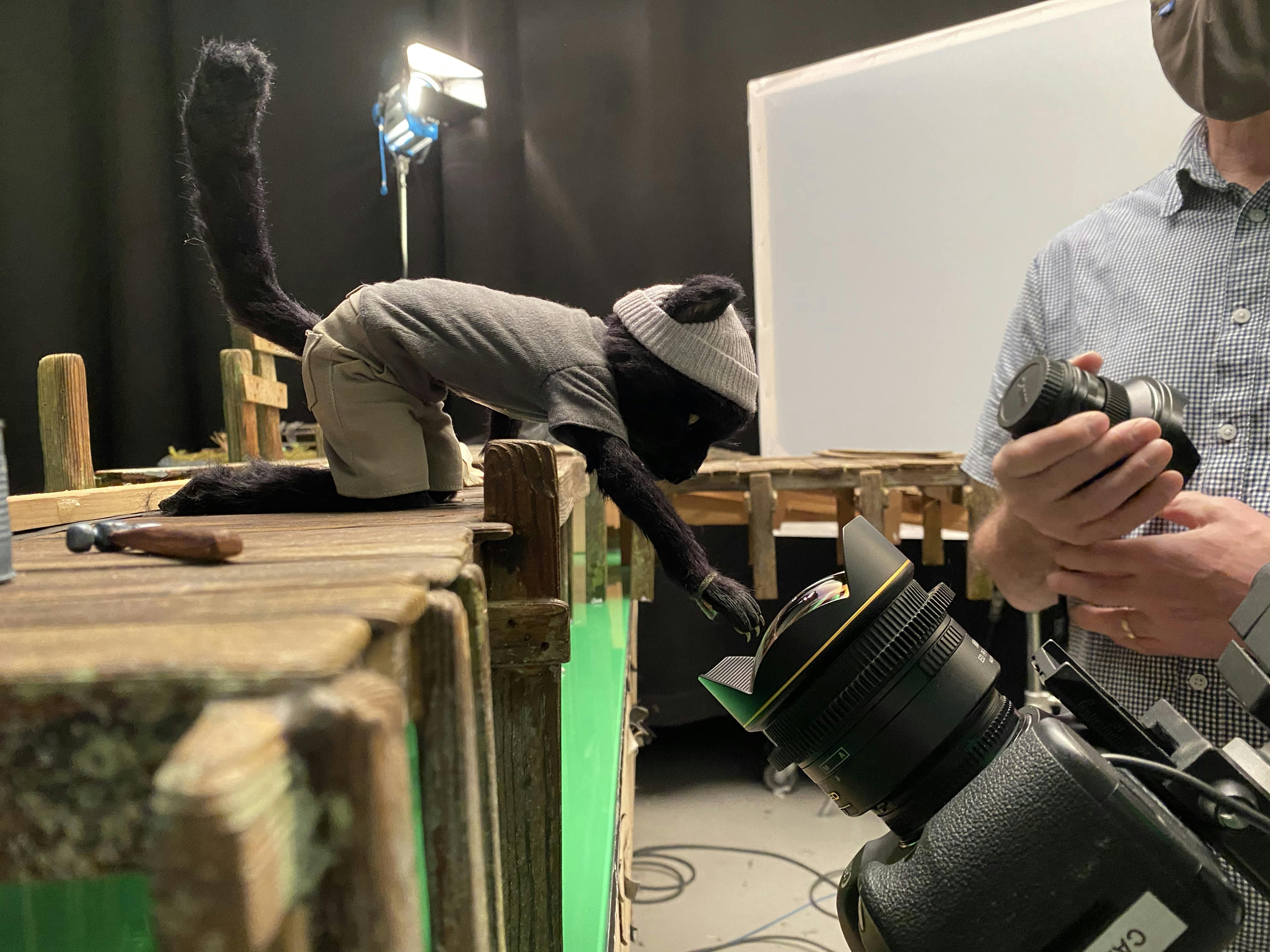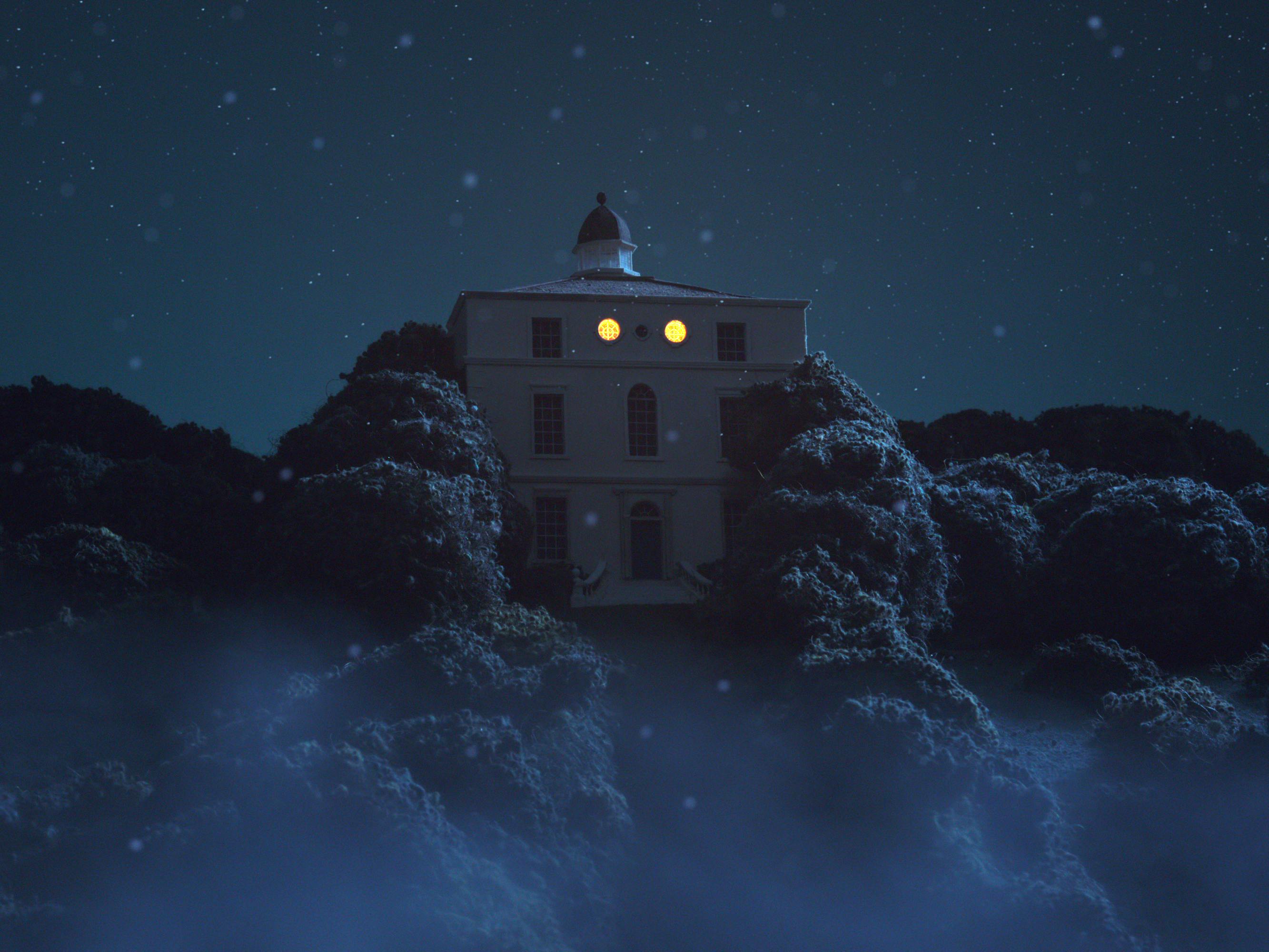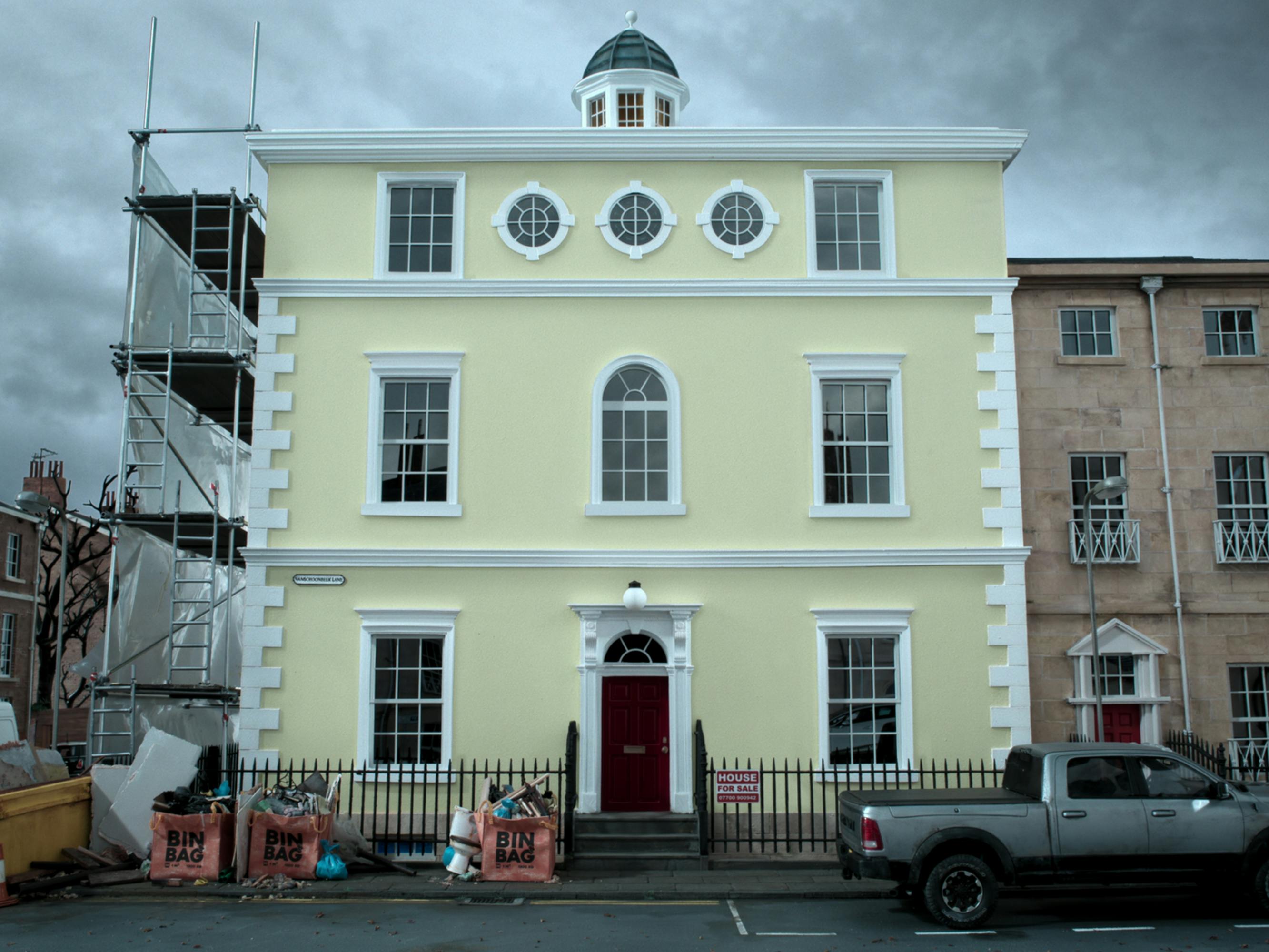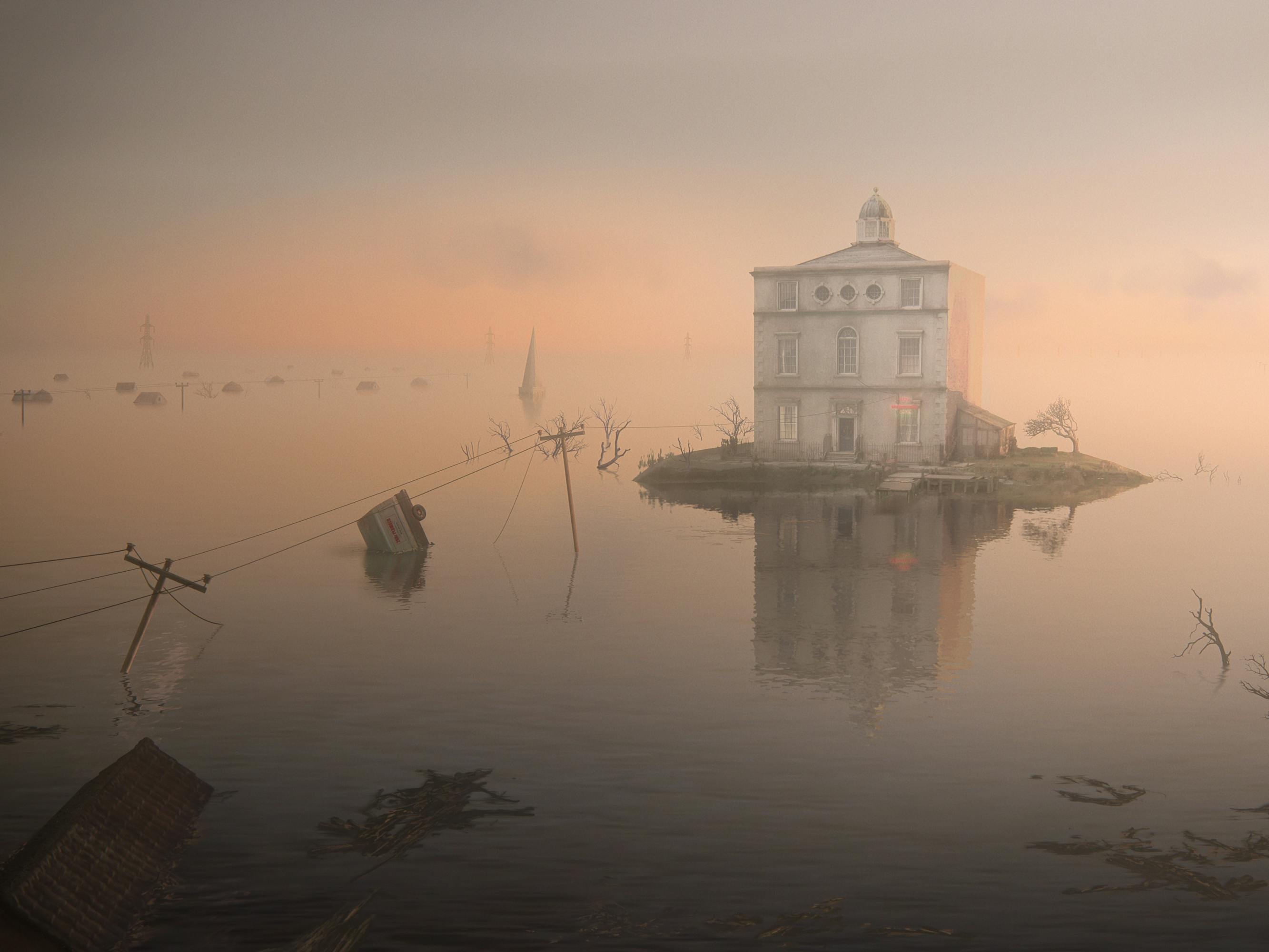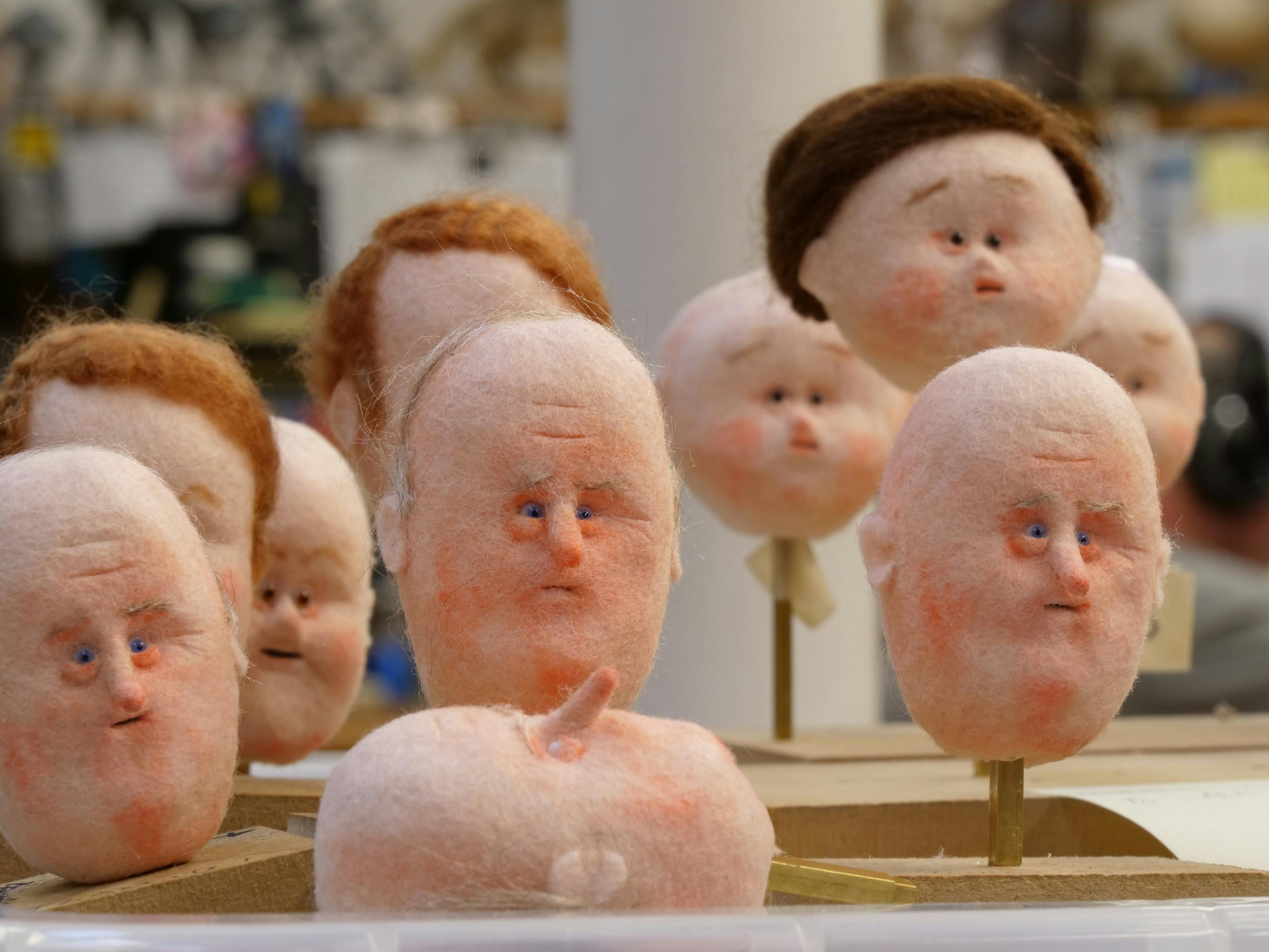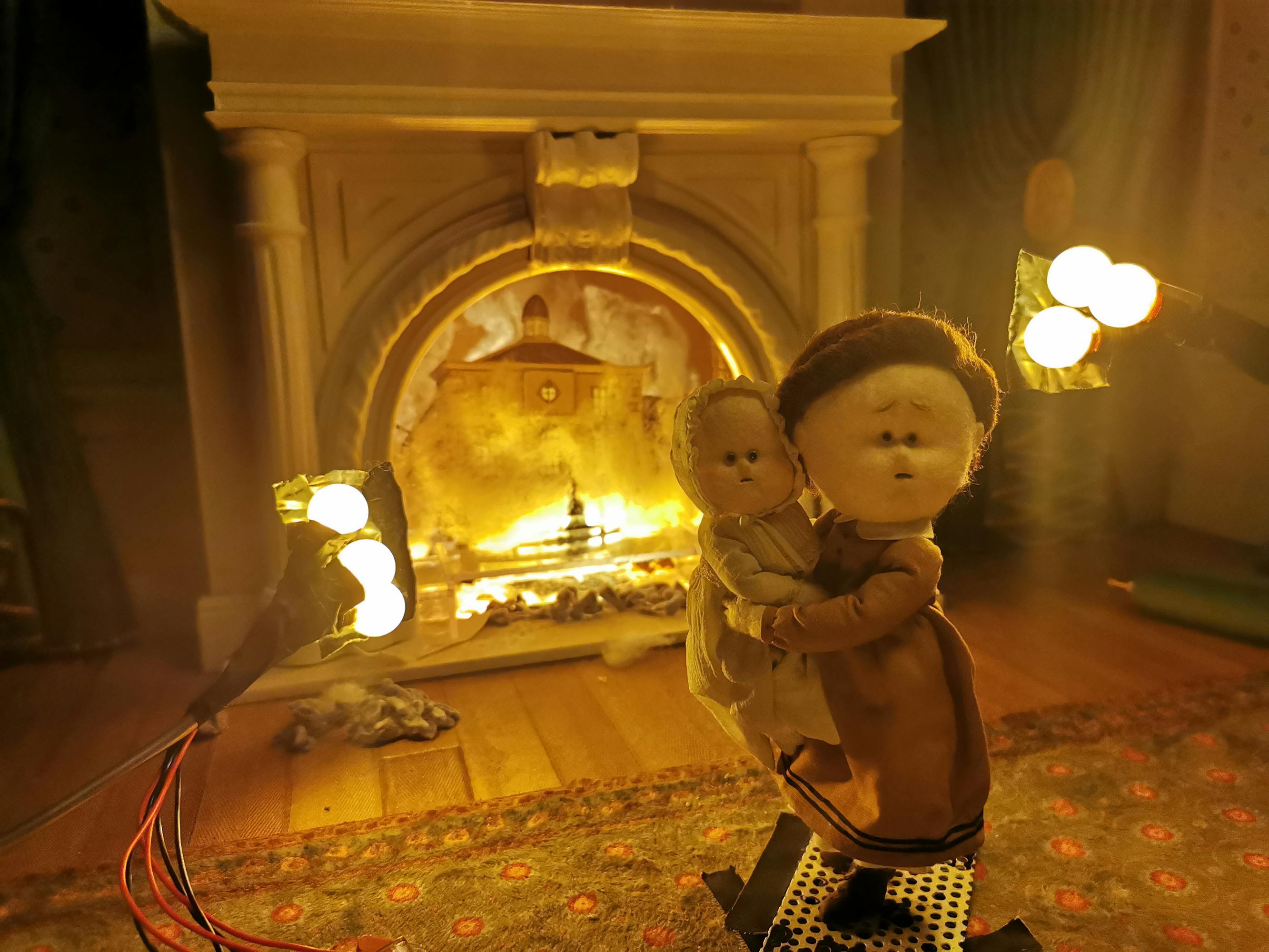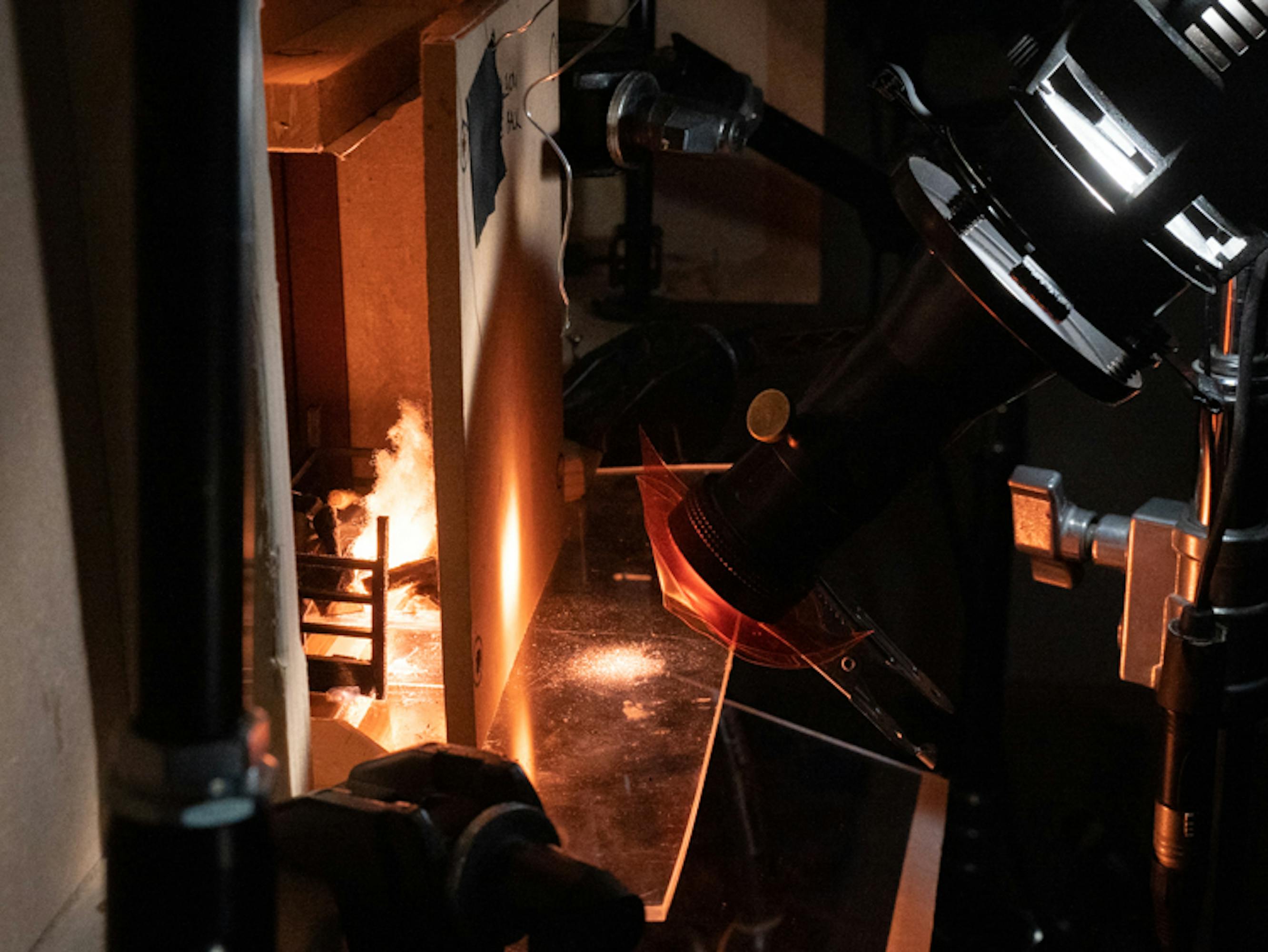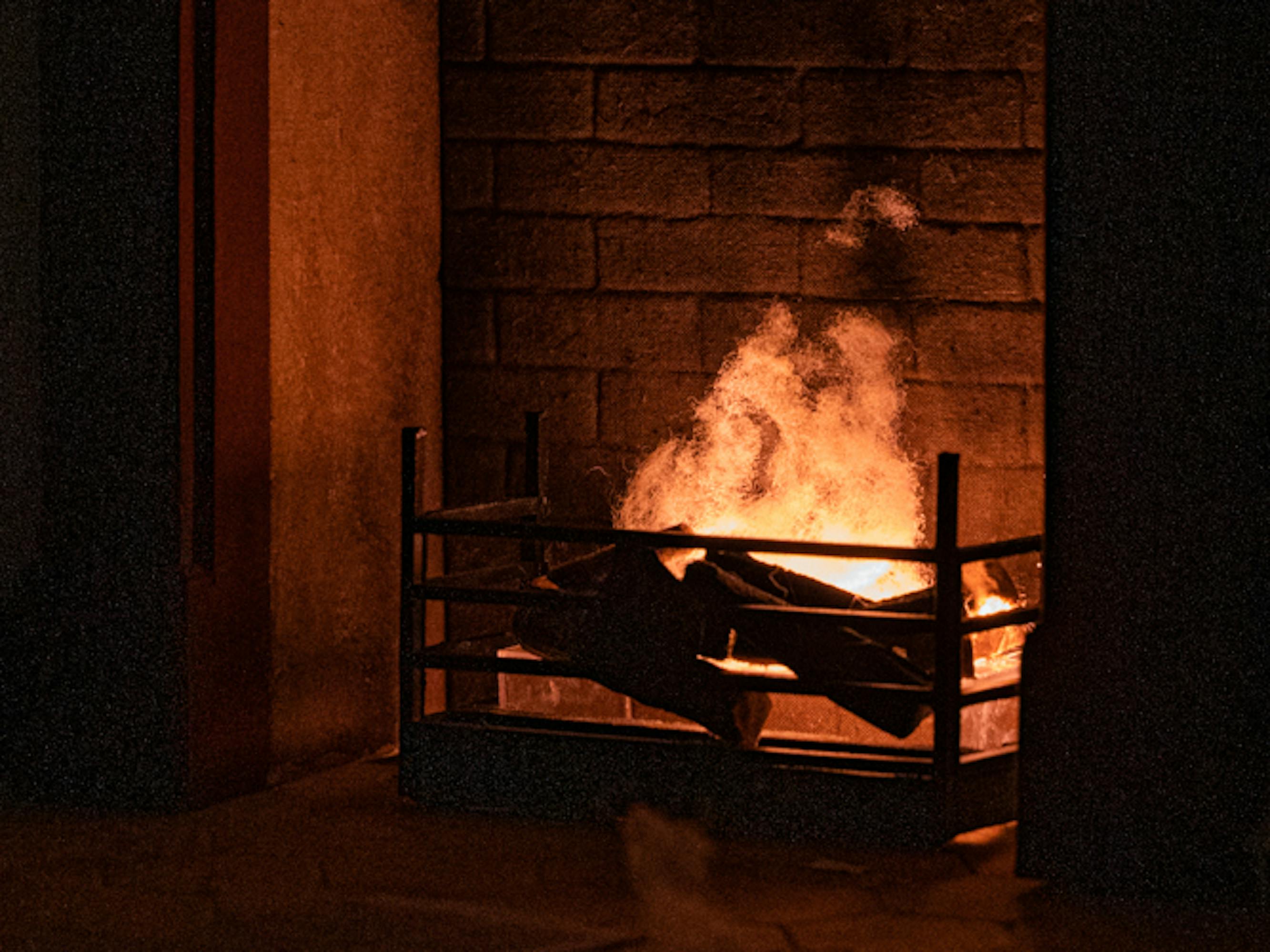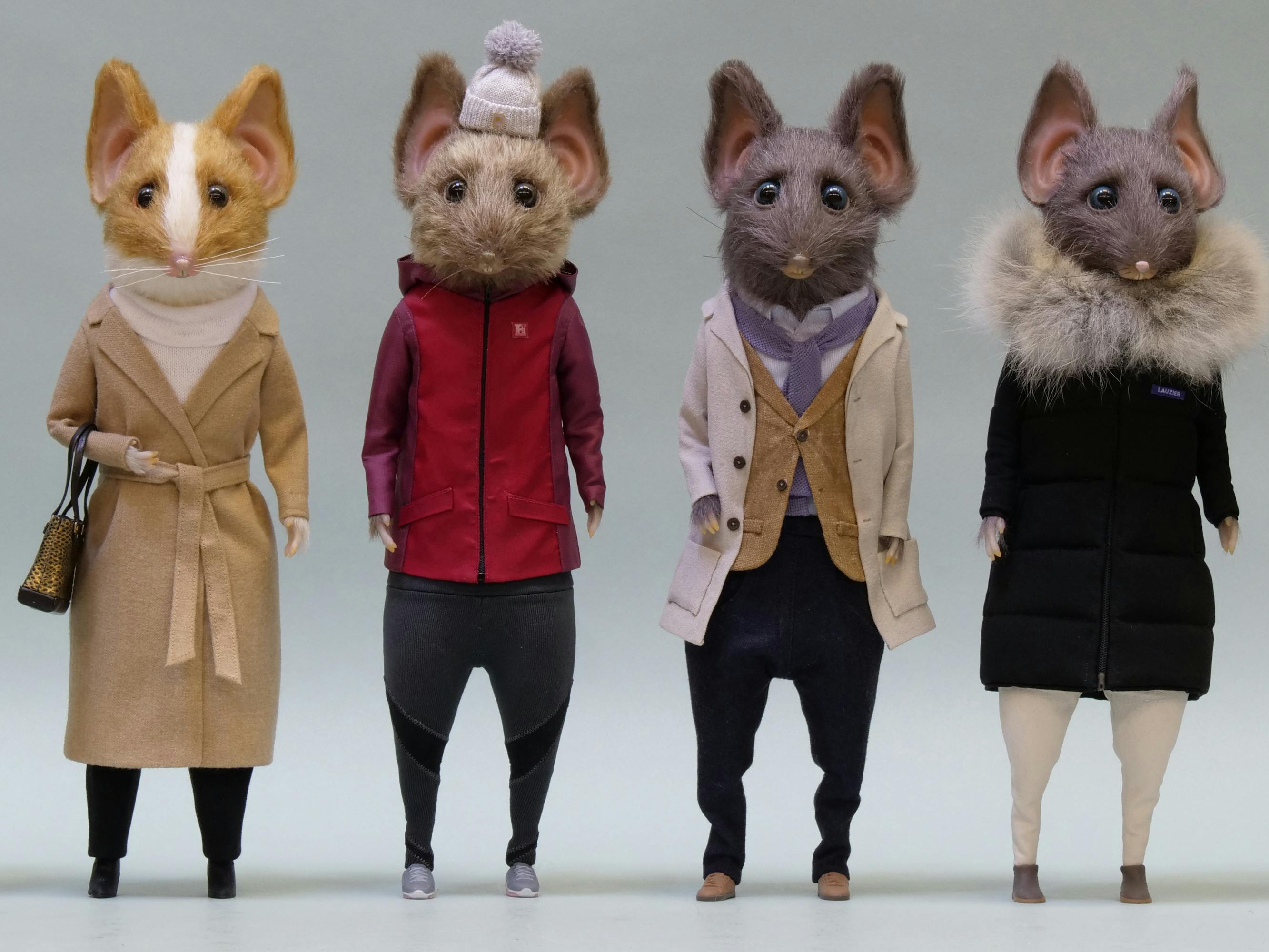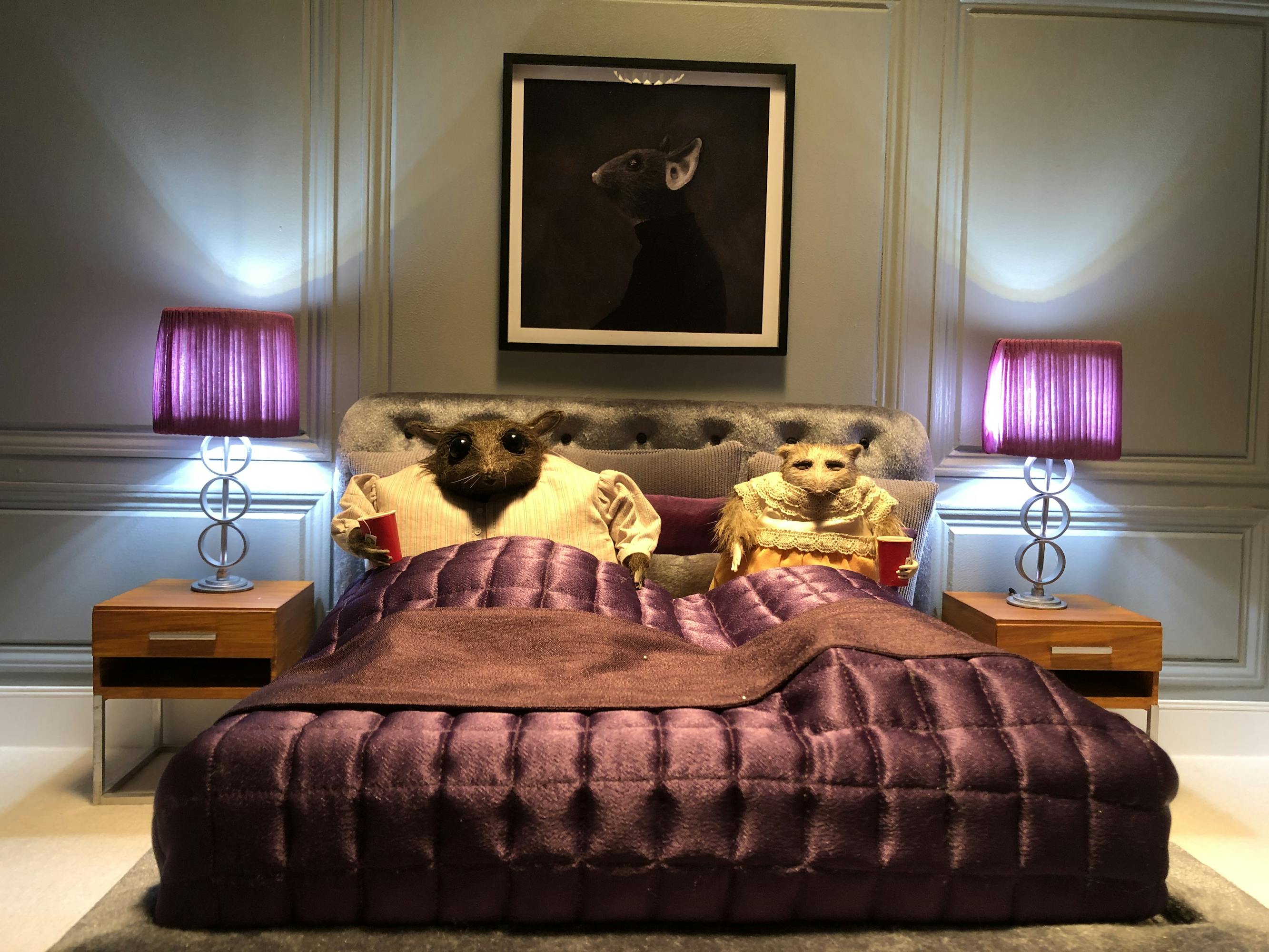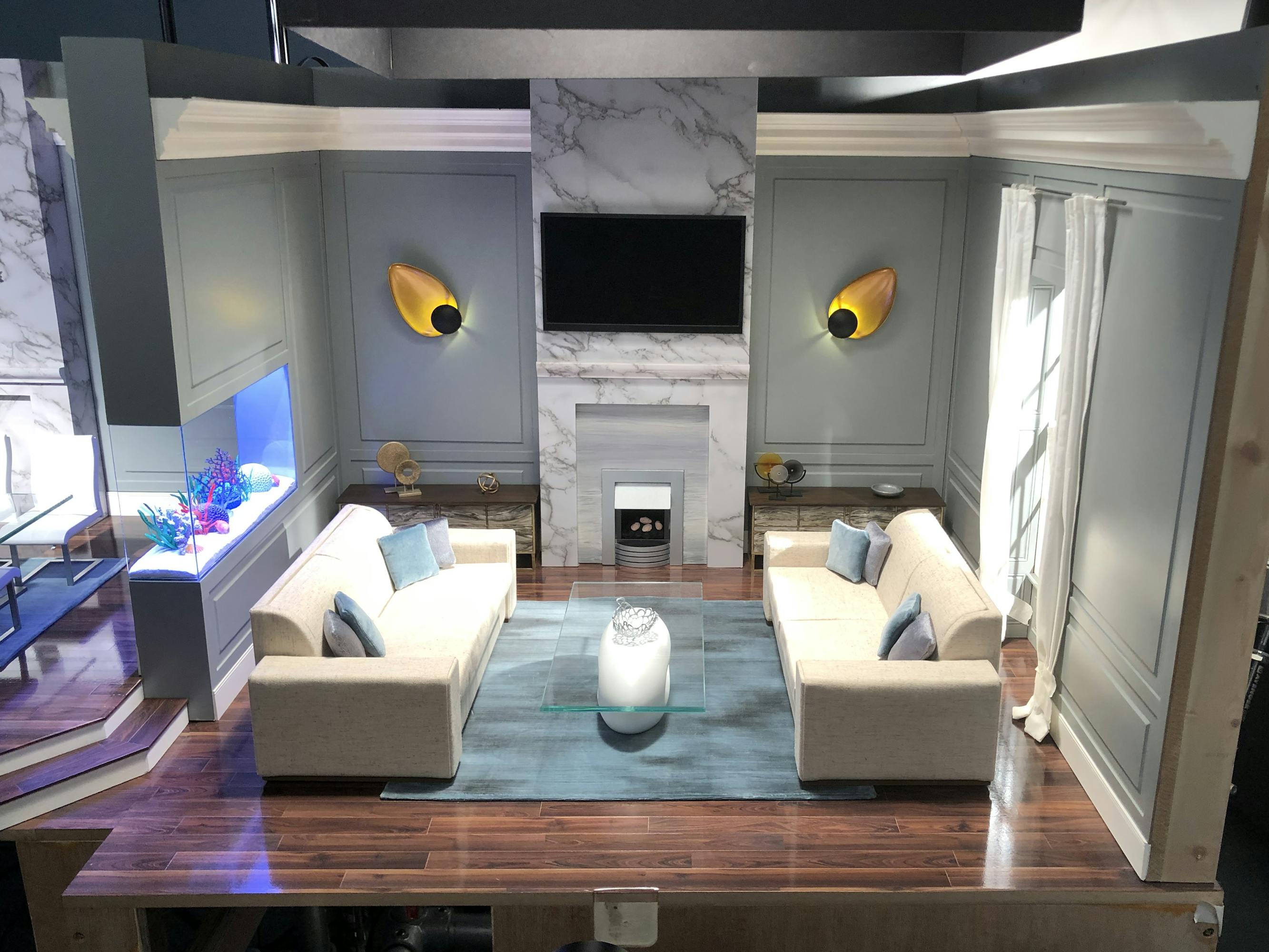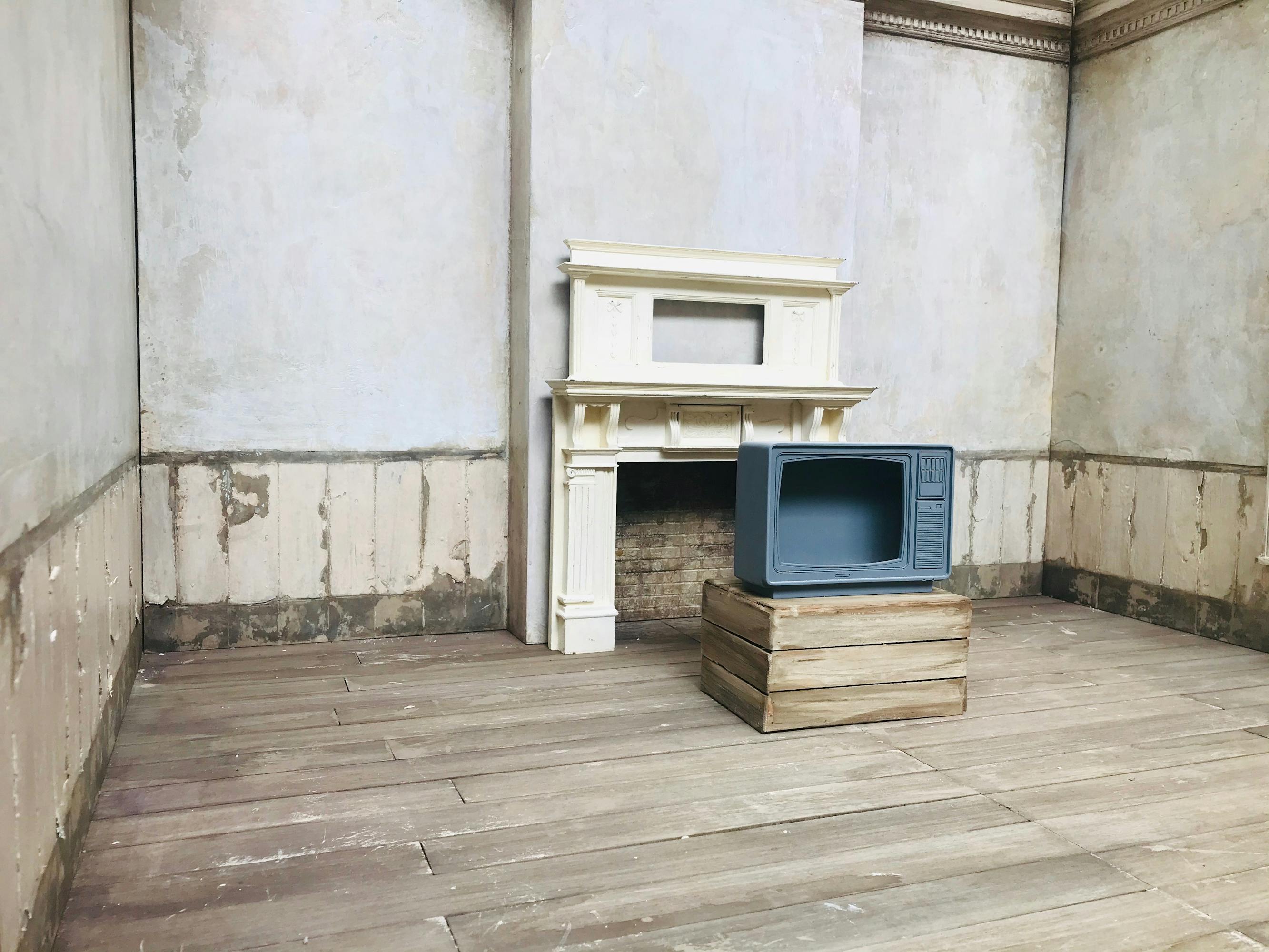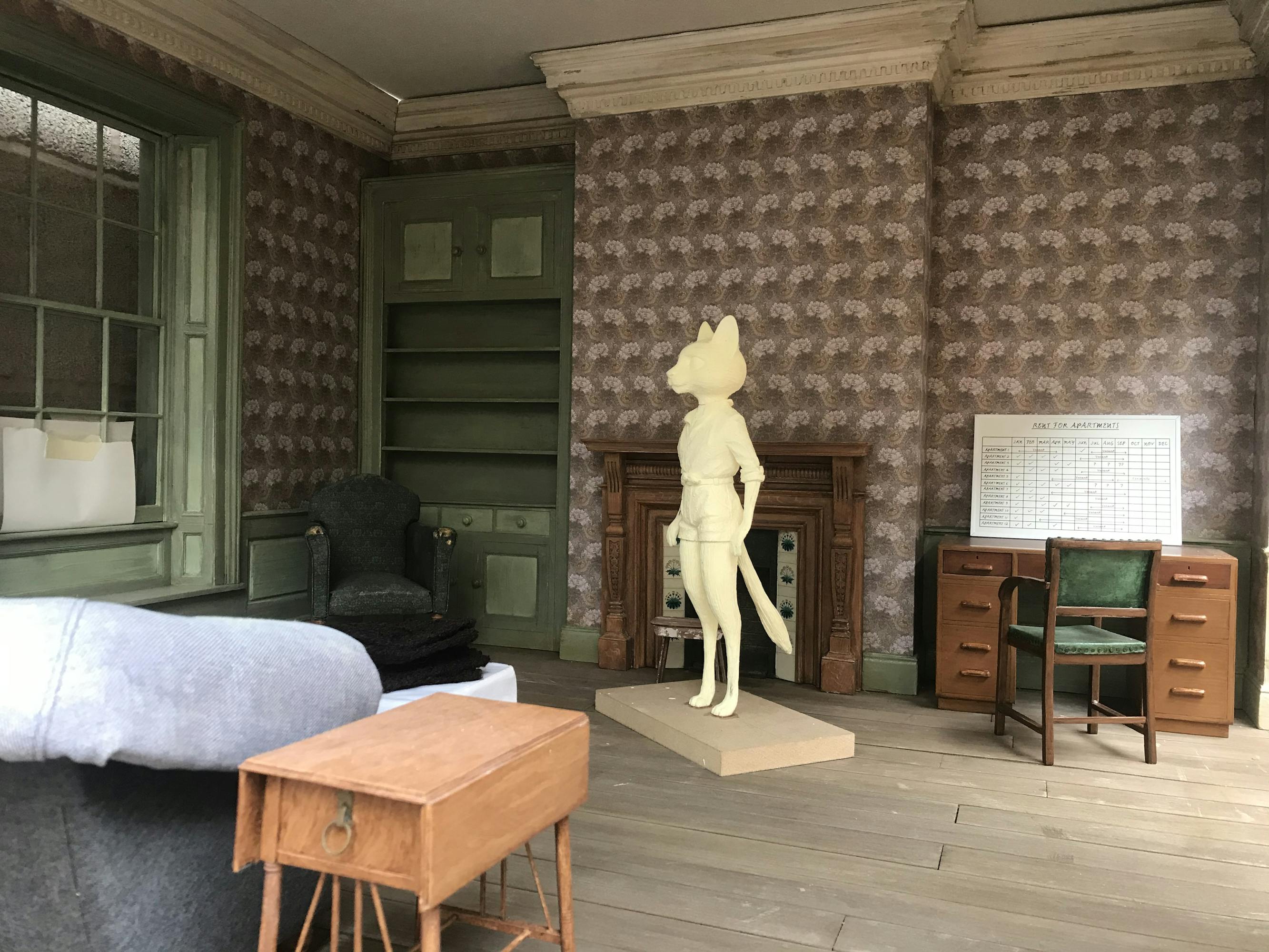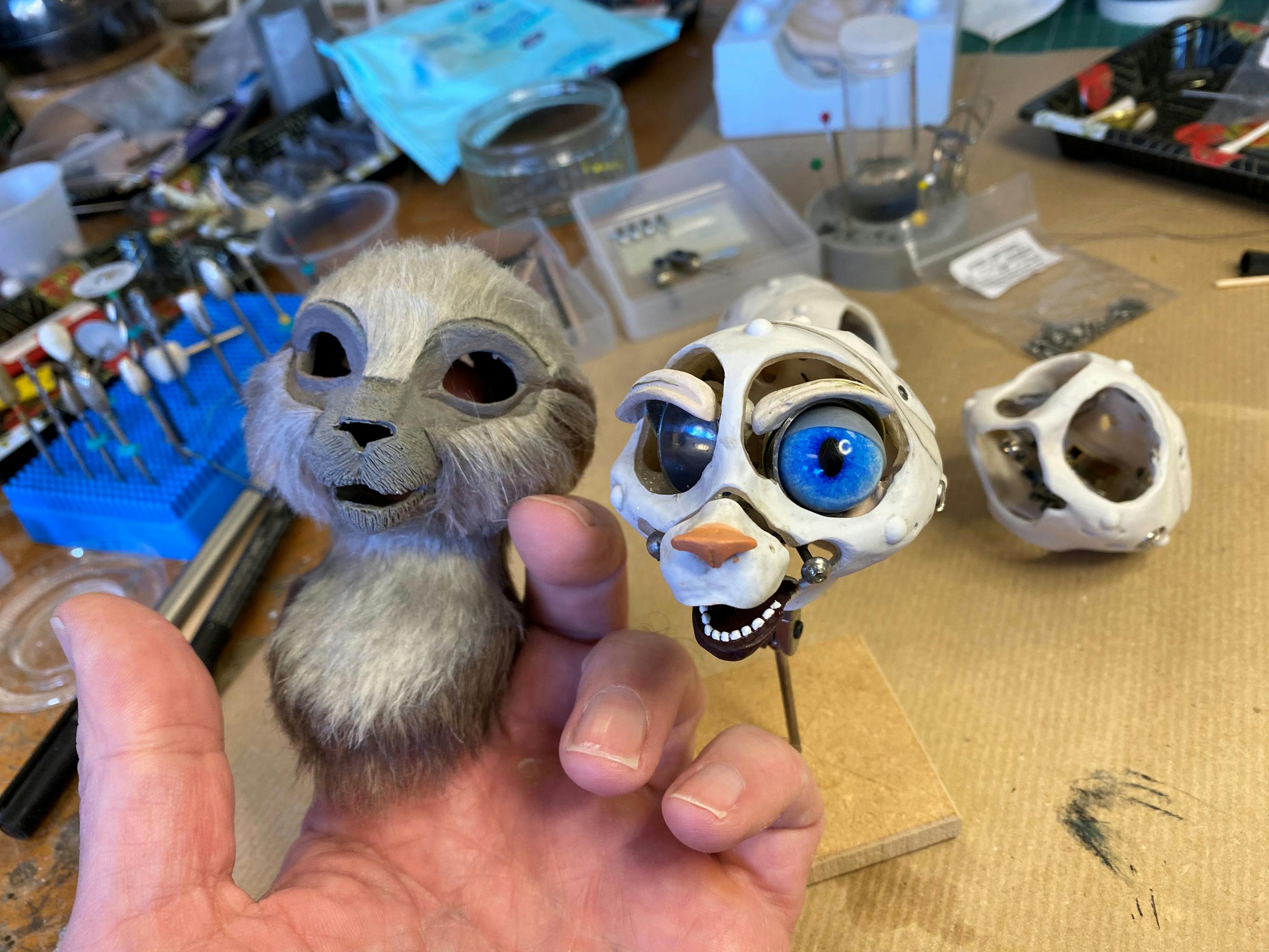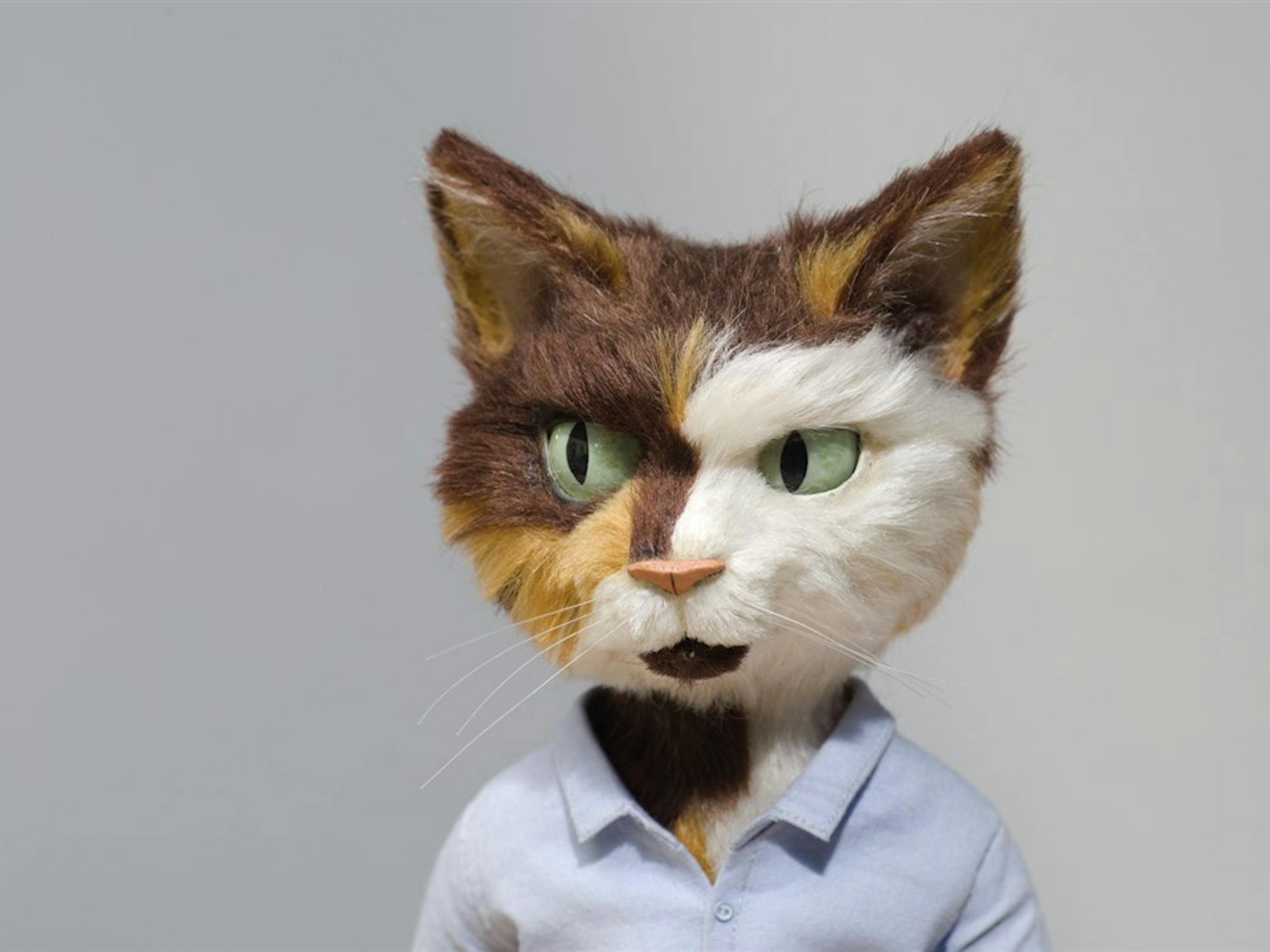Four filmmakers join forces to craft the stop motion masterpiece.
There is magic to be made when you bring four celebrated animators together in a room. In 2019, Nexus Studios called together a group composed of duo Emma De Swaef and Marc James Roels (This Magnificent Cake!, Oh Willy…, “Sugarman”), Niki Lindroth von Bahr (Bath House, Tord & Tord, and The Burden), and Paloma Baeza (Poles Apart, The Toymaker’s Secret) to brainstorm a potential joint project.
The meeting in London was fruitful. de Swaef recalls, “Nexus proposed, ‘Why don’t you think about an anthology that you could possibly make because you all have so much in common.’ Which is true. We love Paloma’s work. We love Niki’s work. We had a great time brainstorming, and out of that session came this idea to each write a story which would be set in the same location in this house.”
The House, the animated special that was born from that session, consists of three stories, with three distinct aesthetics, all set in the same home at different times in its life, and all dealing with similar themes. The different chapters showcase tremendous production design, voice acting, and stop motion animation (in partnership with Mackinnon & Saunders, who also developed the puppets for Guillermo del Toro’s forthcoming Pinocchio) that bring this dark comedy to life.
Here, the directors speak to the concepts and craftsmanship that went into making The House.
Part 1: And heard within, a lie is spun.
Directed by Emma de Swaef and Marc James Roels

de Swaef: In Belgium, we have a saying that every Belgian is born with a brick in their stomach. The idea of having a house, having property, climbing that property ladder is really important for Belgians. I think it’s kind of a universal thing, especially these days. Prices are going up, so for many people it’s impossible to actually acquire any property. These themes were interesting and related to us.
We thought it’d be fun to go for a trope, a Gothic thriller. We wrote a story about an impoverished family who get a strange proposition from an evil architect to receive a free house, which will be on a hill and very fancy. Everyone will envy them. They accept the proposition. The only thing they have to do is leave their little cottage that they live in. They enter the new house and soon things get very strange and everything starts falling apart.
Marc and I are known for making films with woolen puppets. Here, they’re all made in felt. I’m just a big fan of felt. When I was 10 years old, my family moved to a farm and my father bought some sheep. He started knitting carpets, and we learned how to spin our own wool. Since then, I’m just very excited about wool and sheep.
The way we’ve been making films has always been very small and I’ve always made all the puppets myself. We got this opportunity to work with a bigger crew and work with MacKinnon & Saunders, the best puppet-makers in the world. I’d always looked up to them so much. It was very, very exciting. At the same time we thought, How can we preserve the style that we have? It’s a bit of a handmade, tactile, naive look. We succeeded in keeping it very wonky.
One of the big challenges in the film is that fire plays a big role in it, and everything in the film is so wooly and textured. We found it very important to do all our effects practically, so how could we do these fire effects on set? First off, [Mackinnon & Saunders] asked what we wanted this fire to look like. My answer is always, “Well, I want to do it in wool.” Tobias made some amazing fire tests by under-lighting the tufts of wool through a hole in the sets. It’s one of those things that in the beginning is a challenge, and you don’t know how to do it, and together with the team, step by step, you create little solutions, and towards the end we were all so confident.
Part II: Then lost is truth that can’t be won.
Directed by Niki Lindroth Von Bahr
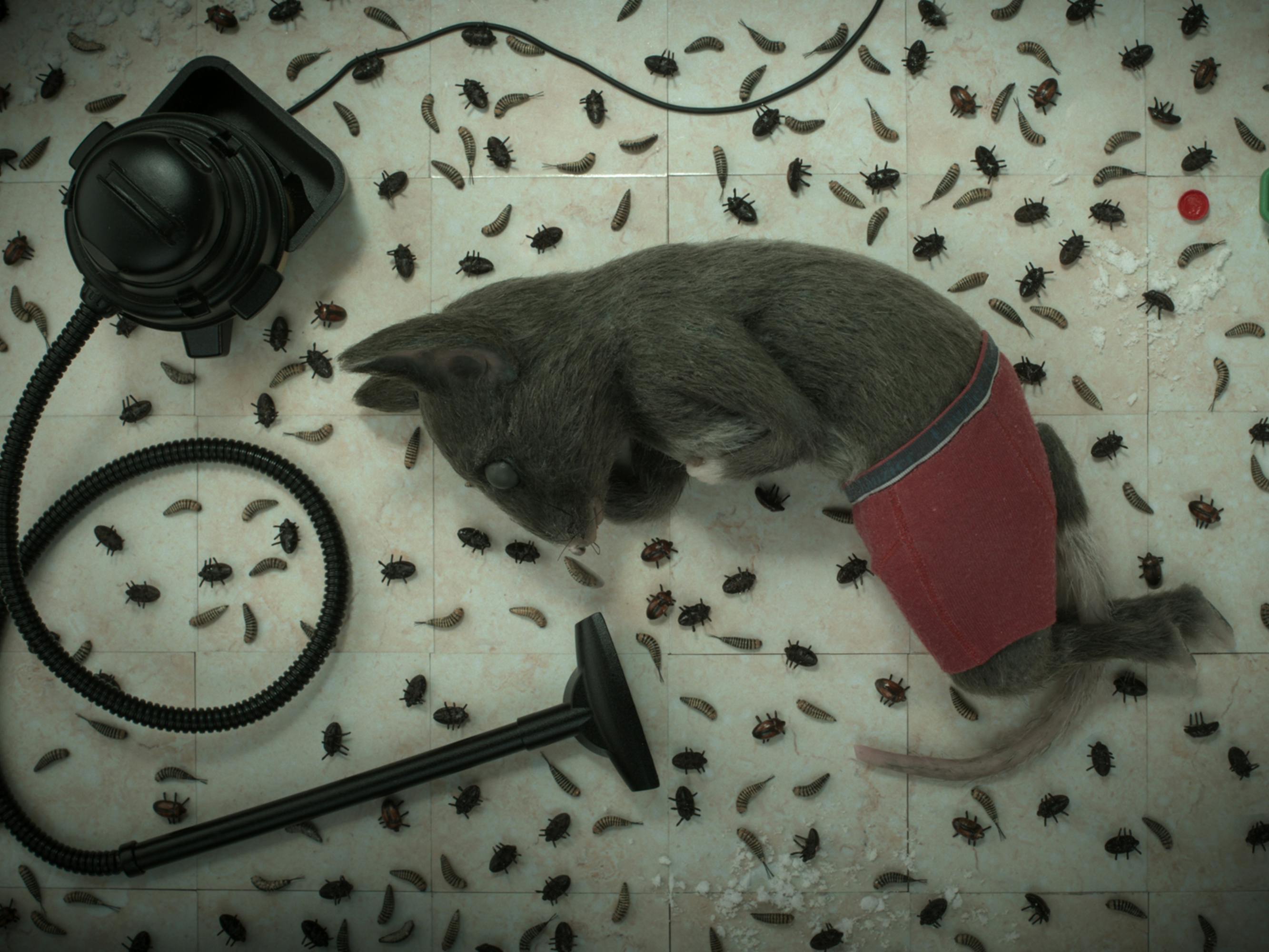
Lindroth Von Bahr: My story, it’s a sort of twisted, claustrophobic, chamber drama, and it takes place in present time. This very worn-down house has been bought by a developer who aims to renovate it in a very over-the-top, lavish way, and hopefully make a lot of money selling it. But the renovation is not really going as planned. The money is starting to run out, and the bank is just calling him constantly, and the house turns out to be invaded by millions of insects. After this huge fight with these insects, and a lack of money, and stress, and everything that can go wrong goes wrong, this big house viewing is happening. The only people that seem to be interested in an actual purchase is a very strange odd couple, and they look and act suspiciously similar to these pests that were just eliminated from the house. In more and less polite ways, they refuse to leave the house once they enter because they seemed to have lived there before. So you could say that this is kind of a journey down a rat hole into both inner and outer madness.
For this project, I really wanted to take it a bit deeper into this ominous and uncomfortable area compared to my previous films. I was also wondering how far you could take this eeriness in a story that still contains a mouse in workwear and a headset.
I do really consider the house to be as much of a main character as the puppets. I wanted to tell a parallel story about capitalism and the twisted housing market. Here in Stockholm where I live, you can’t even walk the sidewalks anymore because there are so many bags of furniture trash from everyone tearing out their kitchens to renovate, spending fortunes.
Me and my artistic director had some good fun in creating these soulless, tacky interiors. We did a lot of Googling MTV Cribs and Kylie Jenner’s mansion to really find what the developer would look for in a lavish renovation. We’ve been working together with Mackinnon & Saunders and Andy Gent, who’s literally the best set builder in the world, and you could get anything that you wanted. We just wanted everything to look very new, but cheap and poorly built. That was quite an interesting challenge to think about when it comes to a miniature.
This is also the first time that I haven’t made all the puppets myself. It was definitely a challenge to let go of some of that control, but it turned out to be completely amazing. It was really just a luxury being able to work with these world-building professionals like Mackinnon & Saunders and Andy Gent. It’s been such a wonderful process, to watch these puppets being made out of your design. It’s like pure magic.
Part III: Listen again and seek the sun.
Directed by Paloma Baeza
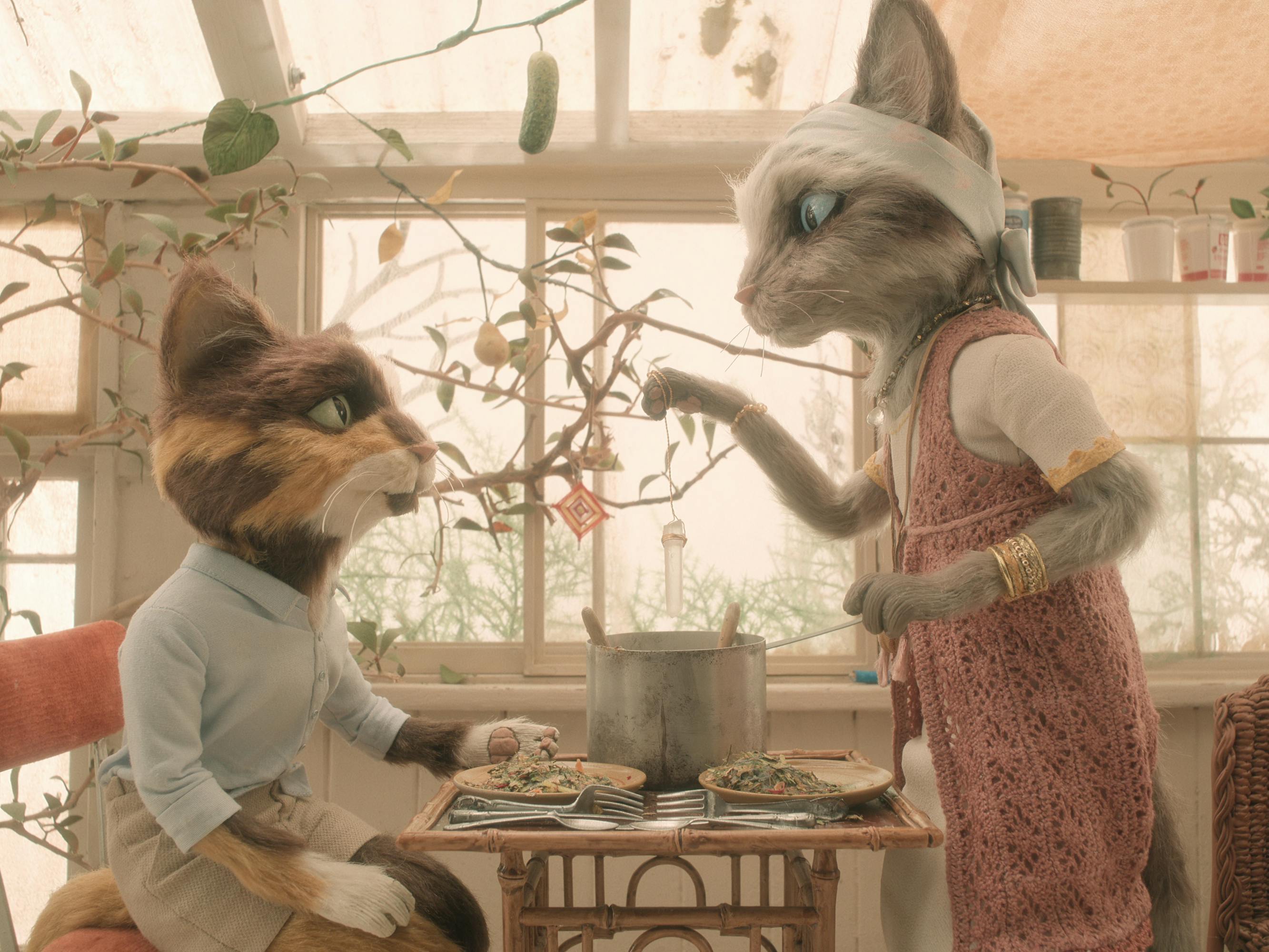
Baeza: By the time we get to my story, it’s some kind of version of the future. The house is in a flooded landscape and it’s been turned into apartments. There’s a landlady who is trying to renovate the house and get her deadbeat tenants out. She’s really not understanding that she also needs to also get out, that she’s focusing on the wrong things. I suppose it’s a story about someone not really being able to move on, not liking change.
In this chapter, the house is slightly crumbling, so you get lots of peeling plaster. Rosa, the landlady, is there trying to do her best to renovate it, but it’s absurd and she’s never going to manage it. She’s trying to put up wallpaper, but it’s a pointless effort; it’s all falling down. It’s an empty journey because she’s failing to recognize the people around her are actually important and that relationships are the things that really should matter.
I’m very preoccupied with character animation. What was in my mind is how can we get the most expression, out of these four key characters — Rosa and her two tenants, and then the hippie character Jen. I tried to get as much mechanics in there as possible. Cats have really quite narrow skulls. So we spent a lot of time trying to develop their eyebrows so that we could have as much expression as possible. It’s so much skill and technical knowledge and problem solving. And I have to say what we ended up with are works of art.
It just shows you the level of skill of these puppet makers, who have been phenomenal throughout, realizing all the mechanics inside their head. On the first day of the shoot, I had one animator. The first thing he did was get this one puppet and create a ton of expressions to see what we could get out of that. It was so exciting. I really remember feeling the puppet was alive, and you just wanted her to speak. That’s the most exciting moment — when you start seeing those characters come to life.
